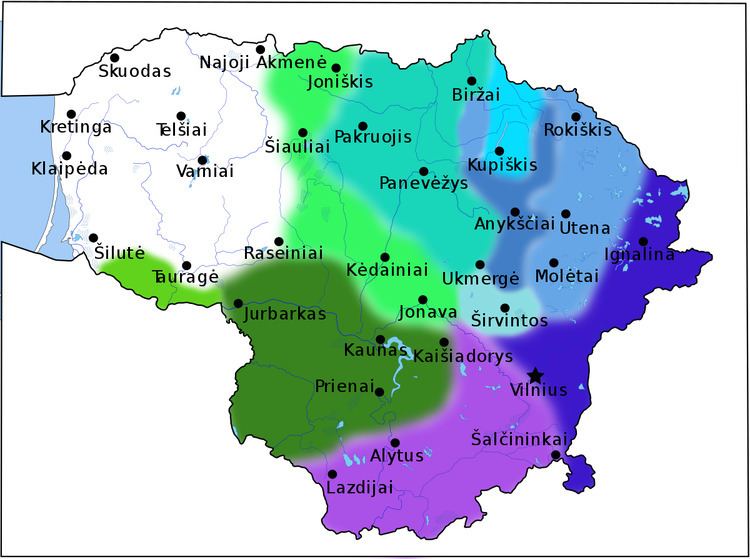Native to Lithuania | Glottolog auks1239 | |
 | ||
Language family Indo-EuropeanBalto-SlavicBalticEasternLithuanian languageAukštaitian | ||
Aukštaitian (Lithuanian: Aukštaičių tarmė) is one of the dialects of the Lithuanian language, spoken in ethnographic regions of Aukštaitija, Dzūkija and Suvalkija. It became the basis for the standard Lithuanian language.
Classification
Revised classification of the dialects, proposed in 1965 by linguists Zigmas Zinkevičius and Aleksas Girdenis, divides Aukštaitian dialect into three sub-dialects based on pronunciation of mixed diphthongs an, am, en, em and ogonek vowels ą and ę:
Western Aukštaitian, most similar to standard Lithuanian, preserves both the diphthongs and the vowels. It is further subdivided into two sub-dialects:
Southern Aukštaitian preserves the diphthong, but replaces ą and ę with ų and į (žųsis instead of žąsis – goose, skįsta instead of skęsta – drowns). It is spoken mostly in Dzūkija and therefore is known as Dzūkian dialect.
Eastern Aukštaitian replaces the diphthongs with either un, um, in, im or on, om, ėn, ėm (pasumda instead of pasamdo – hiring, romstis instead of ramstis – support). The ogonek vowels are replaced with either ų, į or o, ę/ė (grųštas or groštas instead of grąžtas – drill, grįšt instead of gręžti – to drill). It is spoken mostly in Aukštaitija. It is further subdivided into six sub-dialects.
